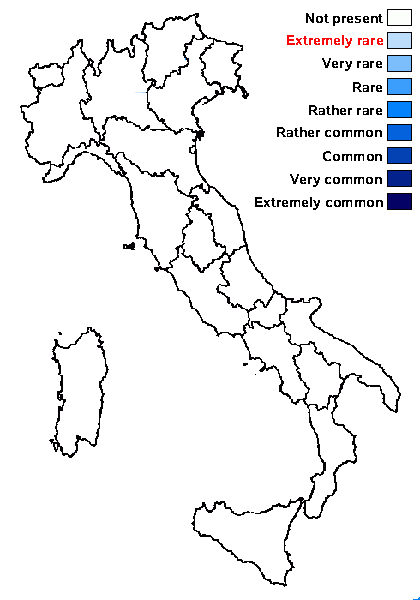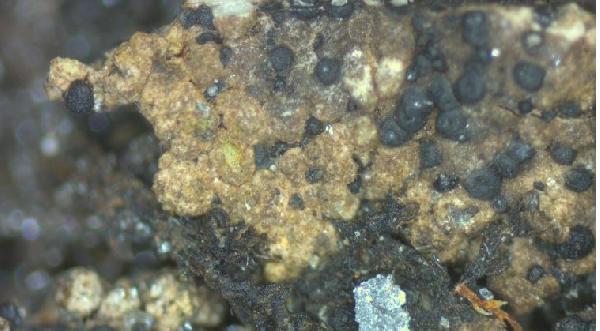Involucropyrenium altimontanum Breuss & Türk
Austrian J. Mycol., 29: 172, 2021.
Synonyms:
Distribution:
Description: Thallus minutely squamulose, brown, epruinose, 50-100 µm thick, the squamules closely adpressed, 0.5-1 mm broad, with a minutely warted surface, flattened to slightly convex; lower surface attached by c. 3 µm thick, colourless to pale brown rhizohyphae. Upper cortex paraplectenchymatous, of small isodiametric cells, rather thin, poorly differentiated from the algal layer, which occupies most of the thallus thickness (hence medulla poorly developed); lower cortex absent. Perithecia black, 0.3-0.4 mm across, developing from the hypothallus and located among the squamules, globose, projecting. Involucrellum extending all around the perithecium, c. 40 µm thick; exciple at first colourless, but soon turning dark and difficult to distinguish from the involucrellum, of tangentially arranged, elongated cells; hamathecium of 20-25 μm long periphyses, interascal filaments absent. Asci 8-spored, clavate, with biseriately arranged spores, the wall I-. Ascospores 1-celled, hyaline, ellipsoid, thin-walled, (10-)11-13(-14) x 5-6 µm. Pycnidia unknown. Photobiont chlorococcoid. Spot tests: cortex and medulla K-, C-, KC-, P-, UV-. Chemistry: without lichen substances.Note: a recently-described species, hitherto known only from the type locality (Hohe Tauern, Austria), where it was growing on soil over calciferous micaschist in the alpine-nival belt. To be looked for in the Italian Alps.
Growth form: Squamulose
Substrata: soil, terricolous mosses, and plant debris
Photobiont: green algae other than Trentepohlia
Reproductive strategy: mainly sexual

Predictive model
Growth form: Squamulose
Substrata: soil, terricolous mosses, and plant debris
Photobiont: green algae other than Trentepohlia
Reproductive strategy: mainly sexual

Predictive model


